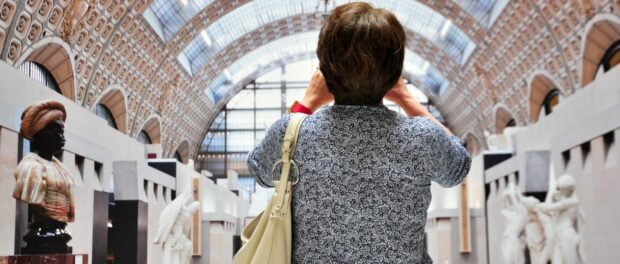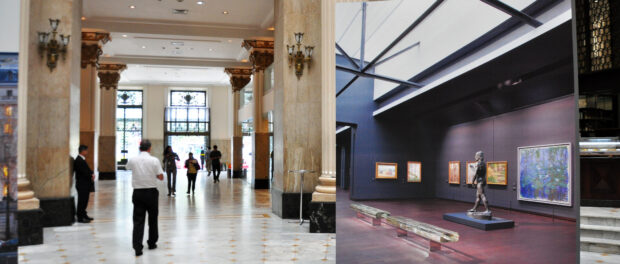
This is the first article in a five-part series on community museums and resistance in Rio’s favelas in honor of Brazil’s 16th Annual Museum Week (May 16-20, 2018).
“History is the fruit of power, but power itself is never so transparent that its analysis becomes superfluous. The ultimate mark of power may be its invisibility; the ultimate challenge, the exposition of its roots.” – Anthropologist-historian Michel Trouillot
In the weeks following the assassination of Marielle Franco we witnessed brazen (but overall unsuccessful) attempts at undermining her inspirational legacy. First circulated by the libertarian-conservative Free Brazil Movement (Movimento Brasil Livre) judge Marília Castro Neves, and congressman Alberto Braga, a series of lies linking Marielle to drug traffickers spread like wildfire on Facebook and over WhatsApp. Despite the fact that 88% of media mentions in the first 19 hours after her murder were supportive, this defamation campaign went viral.
These fabrications were intended not only to undercut Marielle’s character, but also details surrounding the actual murder: although the bullets used to kill Marielle Franco and Anderson Gomes were found to be from an allotment sold to the Federal Police in 2006, the Public Security Minister Raul Jungmann made a statement claiming the bullets were stolen from a post office in Paraíba (this was later denied by the post office).
What emerges is a picture of powerful people refuting and reframing factual evidence in order to manipulate the way Marielle and her murder are remembered. In addition, it serves as a reminder of the ways in which the past can be (re)presented to serve present interests. In these instances, the interest lies in covering up the involvement of the Federal Police in the assassination, and in staining Marielle’s image to blunt her radical politics by relying on poisonous stereotypes of black women from favelas.
This 2018 Museum Week article series will explore the emergence of community museums in the favelas of Rio de Janeiro as tools of resistance against State manipulation of the past. This introductory article will provide the context to the series. The second article will describe the emergence of favela community museums and illustrate the ways in which the museums are sites of resistance. The final articles will focus on three museums’ production of counternarratives to subvert dominant representations of particular favelas. Using examples from the Maré Museum, the Horto Museum, and the Evictions Museum in Vila Autódromo, the series will show how museums provide spaces to rewrite history from their communities’ perspectives.
Myths of marginality
Since the first favela was formed in 1897, these communities have been represented as belonging to a different socio-cultural world from the formal city.
“Favelas are not only astoundingly unsightly, but they also present a serious and permanent threat to the peace and well-being of our society.” – Rotarian José Augusto de Mattos Pimenta during a speech titled ‘Remodeling Rio de Janeiro’ at the Rotary Club, Rio de Janeiro in 1926
Favelas were seen as existing apart from any norms of law and order, and as being in direct opposition to the success of society as a whole. Mattos Pimenta’s speech goes on to describe how favelas are “excellent stimuli for sloth, luring in vagabonds… who spread insecurity and disquiet to the entire city.”
This dichotomy is reinforced today by what scholar Janice Perlman refers to as the “myths of marginality:” a “set of stereotypes… so widespread and deeply entrenched that they form an ideology—indeed, a political weapon—for justifying the policies of the ruling classes, upon which the very lives of migrants and squatters depend.”
Stigma surrounding favelas helped justify violent policies such as the forced removals during Carlos Lacerda’s large-scale ‘modernization’ project in the 1960s, which saw many favelas in the South Zone destroyed and their residents relocated to the outskirts of the city. These same stereotypes also provided the means for lies about Marielle to gain momentum, despite evidence to the contrary.
Myths of marginality permeate the public consciousness in a number of ways. The lack of favela perspectives in the mainstream media, for example, mean that constructed images and descriptions come to be seen as fact, and subjective opinions come to represent national beliefs. A 1995 article in Jornal do Brasil, for example, stated: “Today, 68 of the 180 hills in Rio are occupied by favelas. There are no words to describe what a tragedy this represents for our city.”
The absence of favelas in official histories, museums. and archives in the city also works to keep these stereotypes intact. When alternative narratives are silenced, or when the existence of favelas is denied altogether, myths of marginality triumph. The National Archive in Rio de Janeiro contains information about the history of the areas on which favelas are constructed, however rarely refers to a favela by name. Photographs and information can be found for the area that is now the favela complex of Maré, for example, but one would have to use search terms based on the surrounding middle-class neighborhoods such as Bonsucesso, the Avenida Brasil highway, or the nearby Oswaldo Cruz Foundation (Fiocruz). In 2013 Google temporarily removed ‘favela’ from its maps under pressure from the Rio city government in an effort to reduce the prominence of these communities. In the same year just 0.001% of Rio’s favelas appeared on official maps, meaning 1.4 million people did not have addresses that would allow access to bank accounts, or that could be listed on job applications.
In this way, myths of marginality transformed ‘favela’ from a botanical term to a social and moral category. They are used to shape an organizational discourse on favelas which delimits the boundaries of the social group living in these communities by defining their space, behavioral characteristics, and way of life, allowing the (perceived) deep social division between the favela and the city to persist.
Museums’ origin and narrative
The first museums in Brazil were colonial institutions built in the 19th century by a small, white, educated ruling elite as pillars of a new nation-state. The first Brazilian museum was the Royal Museum (later renamed the National Museum), founded in Rio de Janeiro in 1818. With the exception of the Naval Museum, the earliest museums were all natural history museums focused on collecting and classifying samples of Brazilian fauna and flora.
In the second half of the 19th century, under the influence of Darwin’s theories of natural selection, Brazilian museums employed scientists who applied evolutionary theories not only to plants and animals, but also to human races. These natural history museums therefore came to play a pivotal role in the political arena because they ordered different social groups on an evolutionary scale, with black and indigenous populations at the bottom, and white Europeans at the top. The aim was to establish a national narrative and offer the population a concrete sense of descent, but instead these museums stratified society and legitimized the supremacy of whites.
This legacy prevails in Brazilian museums today. For example, in the National History Museum, the emphasis is placed on the history of the victors, while indigenous, favela, and other marginalized communities have either a minimal presence or are misrepresented. One permanent exhibition, for example, traces the history of Brazil through three parts: ‘The Portuguese and the World’ (1415-1822), ‘Constructing a Nation’ (1822-1889), and ‘Citizenship in Construction’ (1822-present). Nation-building emerges as the clear focus and the Portuguese are the heroes. In this official version, Brazil is born when the Portuguese arrive on its shores. Little attention is paid to pre-colonial Brazil, nor key historical events such as the massacres of indigenous populations and the history of slavery in Brazil.
A temporary exhibition at the National History Museum did present the contributions of African people to Brazilian cultural identity. However, exhibitions like this are an exception to the norm: temporary exhibitions usually have a high entrance fee and present foreign subject matters. In 2017, the National History Museum hosted an exhibition from the Museum of Pop Culture in Seattle about the band Nirvana, for example.
It should be noted that many Brazilians are not in the habit of visiting museums. In 2016 the Brazilian Institute of Museums (IBRAM) recorded just over a million visitors to the 30 national museums it is responsible for. In that same year, by contrast, the Museums Commission in the UK recorded 47.7 million visitors to the 15 national museums sponsored by the Department of Culture, Media, and Sport.
National museums of Brazil stand therefore as monuments to nationalist values, rather than primary sources of information. In the case of the National History Museum of Brazil, the (re)presentation of the past constitutes an official history of the country, where the inclusion of marginalized groups is imagined and pasts which cannot be integrated are excluded.
The recent emergence of community museums in the favelas of Rio de Janeiro has therefore marked an important power shift in the relationship between these marginalized communities and the city. By appropriating an elite institution as their own, favela communities invert the power dynamics that exclude them from representation in national museums and archives, and assert the right to a community history.
Part two of this series, out tomorrow, will demonstrate how these museums are sites of resistance, and show that this resistance manifests itself in different forms.
This is the first article in a five-part series on community museums and resistance in Rio’s favelas in honor of Brazil’s 16th Annual Museum Week (May 16-20, 2018).
Gitanjali Patel is a researcher and translator. She has an MA in Social Anthropology from SOAS, University of London. Her research looks at memory and the production of history in Rio’s favela communities.
Full Series: Museums of Counternarratives and Resistance
Part 1: Brazilian Museums In Context
Part 2: A New Kind of Museum
Part 3: Maré Museum
Part 4: Horto Florestal
Part 5: The Evictions Museum


